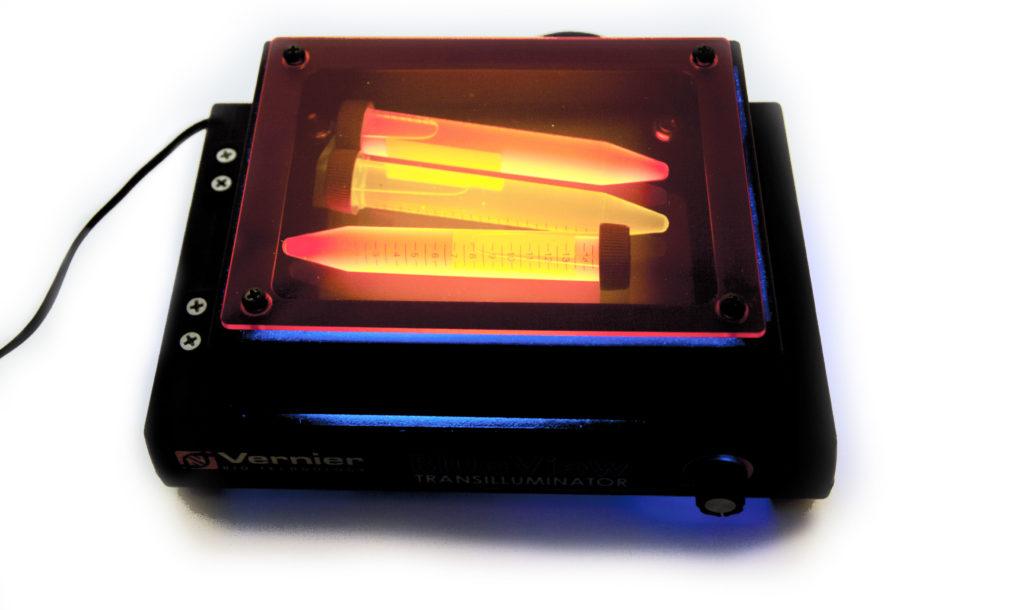The BlueView Transilluminator has a set of super bright blue LEDs that are used to illuminate fluorescent stains. It is often used to look at GFP-transformed bacterial colonies or agarose gels stained with SYBR® Safe DNA Gel Stain. But did you know that you can also use it to show that chlorophyll is fluorescent?
Demonstrating fluorescence is a relatively easy method of bringing molecular biology to life. Some molecules, when excited by specific wavelengths of light, will fluoresce by emitting a lower energy photon, as well as heat, as they return to their ground level energy state. This photon has a slightly longer wavelength than the one that excited it. In this case, chlorophyll is excited by blue light and fluoresces red light. In a functioning cell, some of this energy is converted into chemical energy rather than fluorescing. This ability to “harvest” light energy allows them to produce carbohydrates from water and carbon dioxide during photosynthesis.
To prepare a chlorophyll solution, macerate several spinach leaves in a plastic sandwich bag containing 10 to 15 mL of isopropanol. Then pour the contents of the bag through a coffee filter and collect the filtrate. Transfer the filtrate to a 15 mL test tube and stopper it securely. Place it in the BlueView Transilluminator for viewing. The orange plastic lid will filter out the blue light while allowing the red fluorescence to pass through.

The photo shows a BlueView Transilluminator containing three tubes filled with the chlorophyll filtrate. Notice the red glow as the chlorophyll fluoresces from the excitation of the blue light.
This is a great demonstration to perform when your students are conducting the “Plant Pigments” investigation in our Investigating Biology through Inquiry lab book.
